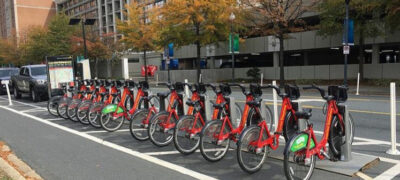
A Framework for Making Successful Technology Decisions
- Date: April 29, 2025
Jump to section
Prepared by:
Kevin Chambers and Lara Bjork, Full Path Transit Technology.
Revised by:
Kevin Chambers
Introduction
Transportation-related technology is a rapidly changing marketplace. It’s hard to stay up to date on the available options, understand how well they actually work, and be confident that your organization has what it needs to implement them successfully. If you work for a rural, tribal, or small-urban transit or transportation provider, making decisions about new technology might be something you dread. This white paper aims to help you change your viewpoint by offering a framework for successfully articulating your operational needs, assessing whether technology can be part of a solution to them, and evaluating options—especially if you don’t have an in-house IT department.
This white paper focuses on information technology systems that are being adopted now or are on the horizon.
By making sound technology decisions, we want to end up with systems that support and make transit either more efficient, usable, or, ideally, both. Making decisions about when to add, remove, or update any technology can be daunting, but there are ways to make it more successful in the long run.
The Dream
We wish technology were easy—that we lived in a world where the tools lined up just right with the way we work and think. In such a world, solving a technology problem would be akin to replacing a broken light bulb. The solution is straightforward: you need a new light bulb.
Because there are different types of light bulbs, you do some research on each type’s costs and benefits, thinking about factors like purchase price, lifespan, operating costs, and environmental impact.
Next, you analyze all the possible solutions, select the one that’s the best for you, and move forward with procuring the light bulb. You look at the different vendors that provide that specific version of the option that you’ve chosen. You do a cost-benefit analysis of those vendors and select the one that is the best, according to the criteria that your procurement process has defined.
At last, you implement. You screw in the light bulb, flip the switch, and sit back with a sense of accomplishment, having completed a highly successful approach to solving yet another problem. You get to step away for months, if not years, before you ever have to think about that light bulb again. Rainbows flood your office, and unicorns are waiting for you in the parking lot!
The Reality
Of course, outside of buying actual light bulbs, things rarely go this way. The reasons may be obvious, but it’s important to name them so as to address them one by one.
System complexity.
Transportation is complex. Services are complex. We’re not agencies devoted to replacing light bulbs. A closer analogy would be that we’re like electric companies responsible for managing an entire electrical grid. We’re juggling drivers, vehicles, schedules, and routes. It’s a lot to deal with.
Misaligned expectations.
Most of us come into the world of transit technology with preconceived notions about technology shaped by our experience with laptops, smartphones, and other consumer electronics. While some transit-specific technologies do approach the sort of plug-and-play experience we’ve come to expect from our mobile devices, it’s not the norm.
An absence of standards and interoperability.
For significant aspects of transit, the truism of “if you’ve seen one transit agency, you’ve seen one transit agency” still holds true. The wide range of operations and systems behind them grew with the rise of Transportation Network Companies (TNCs) and other disruptive transportation models that pushed many agencies to seek out tools that were too new to have a settled design approach. Yet even for hardware and software that have been mainstays in nearly every agency for many years, there is a constant battle with tools that are not designed to integrate with other key components in a transit agency.
An absence of leadership.
The challenges of complexity, confusion, and incomplete tools get compounded by the hope that technology will lead the way and free us from making tough decisions.
For rural, tribal, or small-urban transit agencies, these challenges have an extra degree of difficulty. It’s unlikely that you have dedicated IT staff who have the time to devote to stay on top of the rapidly shifting landscape of technology options.
